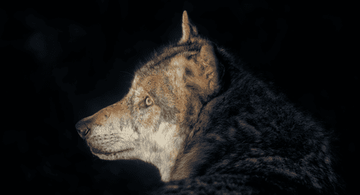France, with its rich and varied biodiversity, is home to numerous animal and plant species. Many of these species are specifically protected to preserve our unique natural heritage. But which animals are protected , and why is it so crucial to care about them? By delving into French legislation, let's discover together the efforts made to conserve these natural riches.
Legislative context of protected species in France
In France, the protection of species is based on several legal instruments . The main legislation is the Environmental Code, which governs wild fauna and flora. This fundamental text emphasizes the importance of preserving biodiversity by defining various conservation measures .
In this context, a large number of endangered species receive special attention from the French authorities. Ministerial decrees specify the protection measures for certain animals and plants. Sometimes, these are strict prohibitions aimed at preventing capture or harvesting, while in other cases, it is the destruction of their natural habitats that is prohibited.
International and regional agreements
In addition to the national framework, France is a party to various international treaties and conventions that protect wild species . Among these is the CITES convention (Convention on International Trade in Endangered Species of Wild Fauna and Flora), which regulates the trade in animal and plant species to prevent their overexploitation.
At the European level, France must also comply with certain directives, such as the Birds Directive and the Habitats Directive. These European texts complement the legal framework by ensuring the conservation of flagship species and their habitats at the Community level.
Protected mammals in France
Among the many inhabitants of our forests and mountains, some mammals benefit from specific protection measures . These animals often play a vital role in the ecosystem, which justifies the increased attention they receive.
One of the most emblematic mammals benefiting from such protection is the Eurasian lynx. Although often discreet, this feline faces threats such as habitat fragmentation and a decrease in its natural prey. Thanks to concerted actions, particularly in the Alps and Vosges, the lynx's chances of survival are increasing.
The specific case of the wolf
Another powerful symbol of French wildlife, the wolf is a subject of constant debate among various stakeholders. Once exterminated, it has successfully returned to mainland France thanks to protection promoted by ministerial decrees. Despite some social tensions related to pastoral activities, the presence of the wolf testifies to the resilience and richness of our environment.
Similarly, the Alpine ibex, successfully reintroduced to the Alps, represents another success of French conservation policies. Their population, once close to extinction, now shows encouraging signs of recovery thanks to the constant monitoring of local teams.
Protected Birds: Diversity and Challenges
Birds greatly enhance the beauty of the French skies with their vibrant plumage and melodious songs. However, several species require special attention to ensure their survival.
The bearded vulture, sometimes nicknamed the "bone-breaker," is a species gaining increasing recognition among ornithology enthusiasts. This impressive bird of prey, characterized by a very wide wingspan, feeds mainly on carrion and thus provides an important ecological service.
Wetland rescuers
Marshes and other wetlands also host sensitive bird species. The black-winged plover and the white spoonbill, for example, illustrate this intensive protection. Without these initiatives, many migratory birds would risk having their passage complicated during their annual migrations.
Natural reserves such as the Camargue offer exceptional conditions for these migratory populations. Such areas become essential for nesting and help maintain populations at viable levels year after year.
Reptiles and amphibians: silent sentinels
Far less flamboyant than their feathered counterparts, reptiles and amphibians are nonetheless essential for the ecological health of natural areas. Unfortunately, their discretion often exposes them to dangers such as pollution or rodent control.
Some areas of southern France still host the Hermann's tortoise. However, its survival depends heavily on the respect and preservation of its Mediterranean habitat. Otherwise, its species could suffer severely.
An underestimated importance
Next, the great crested newt or the eyed lizard provide complementary perspectives to the complex picture of reptilian biodiversity. Their presence testifies to fragile balances between natural biotope and adaptive human management.
Listed as protected species , their situation is nevertheless evolving positively thanks to focused conservation plans. Gradually, their status inspires more similar projects, supporting the underlying global ecological network.
Some inspiring local initiatives
Countless organizations are implementing various concrete actions to actively participate in maintaining a harmonious living environment throughout France. Herein also lies hope, when local authorities, NGOs, scientists, and ordinary citizens unite around a common cause.
The so-called "Natura 2000 Network" operations, which aim to protect and manage sites where a multitude of species find refuge, contribute, among other things, to this monumental collective effort towards our natural heritage . Following the example set by bold associations, local integration becomes viable even when faced with contemporary daily complexities.
Diversify teaching approaches
Schools, museums, nature reserves – all these places offer multiple opportunities for multifaceted and intergenerational awareness-raising! At the heart of future public discussions will emerge new adaptive methodologies that strengthen the human-nature synergy essential for sustainable ecosystem longevity.
Faced with today's major global challenges, every action counts towards redistributing shared prosperity. Every protected animal contributes to conscious collective responsibility, allowing us to dream of a bright and biodiverse common future, reviving a deep connection between humanity and its environment.
